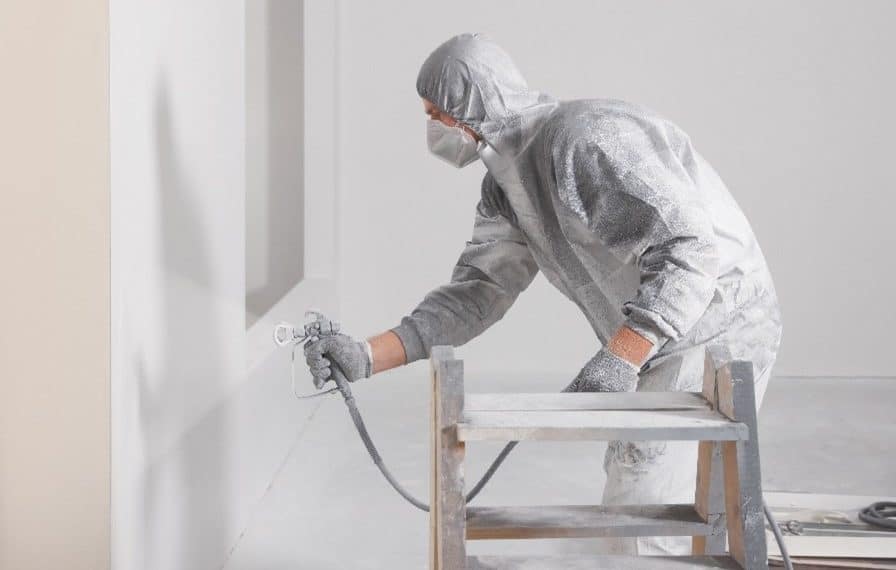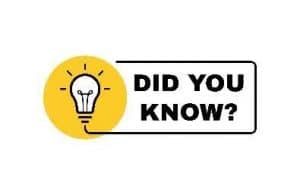- Home
- Air analysis
- Occupational exposure
 Occupational exposure
Occupational exposure

Why perform workplace air measurements?
The decree of December 15, 2009 concerns technical controls of occupational exposure limit values in the workplace, and the conditions for accreditation of organizations in charge of such controls. Technical inspections comprise four services: sampling strategy, sampling, analysis and diagnosis of whether the occupational exposure limit value has been met or exceeded.
Organizations may choose either the “sampling” or the “analysis” specialty. Organizations opting for the “sampling” specialty are accredited to provide services relating to the establishment of sampling strategies, sampling and the diagnosis of whether the occupational exposure limit value has been met or exceeded. Organizations opting for the “analysis” specialty are accredited solely to provide analysis services.
Occupational exposure limit values are regulatory tools for the prevention of chemical risks through inhalation. They are expressed as airborne concentrations of a chemical agent, for a given exposure time. Below these concentrations, the risk of damage to health is considered negligible. INRS makes available all regulatory and non-regulatory limit values established for chemical agents (gases, dusts, aerosols, etc.). For each substance listed, the following information is provided: substance designation, CAS number, 8h limit value (in ppm or mg/m3), short-term limit value (in ppm or mg/m3), year in which the limit value was updated, reference to an occupational disease table or an INRS toxicological data sheet, additional comments.
At national level, the reference document for workplace air laboratory accreditation is LAB REF 27.
Some examples of workplace air measurement applications are listed below :
- Occupational exposure to various gaseous and particulate compounds such as dusts, metals, VOCs, acids, etc.
- Mesure de la silice cristalline ; minéral qui peut être présent dans de nombreux produits et matériaux, comme le béton, le verre,
la porcelaine, la céramique, la fonderie, etc. Le code du travail fixe une valeur limite d’exposition professionnelle pour les mélanges
de poussières de silice et d’autres natures (Articles R.4412-154 et R.4412-155) et l’arrêté du 26 Octobre 2020 classe comme
cancérogènes les poussières de silice cristalline alvéolaire, - Air quality measurements in swimming pools: nitrogen trichloride (trichloramine), trihalomethanes (THMs) and other chlorinated compounds,
- Air quality measurements in hospitals: aldehydes, VOCs, hydrogen peroxide (H2O2), peracetic acid, nitrous oxide (N2O) etc.
What compounds are measured in workplace air?
TERA Environnement offers analysis of a wide range of chemical contaminants.
TERA Environnement can analyze over 500 VOCs, including
- Aromatic and aliphatic hydrocarbons
- Oxygenates including methanol, phenol and cresols :
Methanol; Ethanol; Tert-butanol; 1-Butanol; 1-Propanol; 2-Butanol (Sec-Butanol); 2-Propanol (IPA); Isobutanol; Phenol; o-Cresol; m-Cresol; p-Cresol etc…
- Volatile Organic Halogenated Compounds or Halogenated VOCs :
Vinyl chloride monomer (VCM); Dibromomethane; Trichloromethane (Chloroform); Tetrachloromethane (CCl4); 1,2-Dichloroethane (1,2-DCE); 1,1-Dichloroethylene; Cis 1,2 Dichloroethylene; 1,1,1 Trichloroethane ; Trichloroethylene; Tetrachloroethylene (Perchloroethylene); 1,2-Dichloropropane; Trans 1,3 Dichloropropene; Cis 1,3 Dichloropropene; Trans 1,2 Dichloroethylene; 1,1,2-Trichloroethane; 1,1 Dichloroethane; Chloroethane
- Mercaptans and sulfur compounds :
Tert Butanethiol; Methanethiol; Ethanethiol; 1-Propanethiol; 2-Propanethiol; 1-Butanethiol; 2-butanethiol; Dimethylsulfide (DMS); Carbon Disulfide (CS2); Dimethyl Disulfide (DMDS); Dimethyl Trisulfide (DMTS)
- Acid gases :
Hydrogen sulfide (H2S); Ammonia (NH3); Hydrochloric acid (HCl); Hydrofluoric acid (HF); Total cyanides; Sulfur dioxide (SO2); Nitrogen dioxide (NO2); Nitrogen monoxide (NO) etc.
- Volatile fatty acids :
Acetic acid; Valeric acid; Isovaleric acid; Butyric acid; Isobutyric acid; Propionic acid
- Amines :
Allylamine; Diethylamine; Dimethylamine; Dipropylamine; Ethanolamine (2-aminoethanol); Ethylamine; Methylamine; N-Butylamine; Triethylamine; Trimethylamine
- Formaldehyde; Acetaldehyde; Acrolein; Propanal; Butanal; Benzaldehyde; Isopentanal; Pentanal; Hexanal; 2-Butenal; Acetone
- Nitrogen trichloride; Trichloromethane (Chloroform); Tribromomethane (Bromoform); Dibromochloromethane; Bromodichloromethane etc.
Respirable and inhalable wood dusts
- Aluminium (Al) ; Antimoine (Sb) ; Argent (Ag) ; Arsenic (As) ; Baryum (Ba) ; Béryllium (Be) ; Bore (B) ; Cadmium (Cd) ; Cérium (Ce) ; Césium (Cs) ; Chrome (Cr) ; Cobalt (Co) ; Cuivre (Cu) ; Dysprosium (Dy) ; Erbium (Er) ; Étain (Sn) ; Europium (Eu) ; Fer (Fe) ; Gadolinium (Gd) ; Gallium (Ga) ; Germanium (Ge) ; Hafnium (Hf) ; Holmium (Ho) ; Lanthane (La) ; Lithium (Li) ; Lutécium (Lu) ; Manganèse (Mn) ; Mercure (Hg) particulaire & gazeux, Molybdène (Mo) ; Néodyme (Nd) ; Nickel (Ni) ; Niobium (Nb) ; Or (Au) ; Palladium (Pd) ; Phosphore (P) ; Platine (Pt) ; Plomb (Pb) ; Praséodyme (Pr) ; Rhénium (Re) ; Rhodium (Rh) ; Rubidium (Rb) ; Ruthénium (Ru) ; Samarium (Sm) ; Scandium (Sc) ; Sélénium (Se) ; Silicium (Si) ; Strontium (Sr) ; Tantale (Ta) ; Tellure (Te) ; Terbium (Tb) ; Thallium (Tl) ; Thulium (Tm) ; Titane (Ti) ; Uranium (U) ; Vanadium (V) ; Ytterbium (Yb) ; Yttrium (Y) ; Zinc (Zn) ; Zirconium (Zr)
- Quartz; Cristobalite; Tridymite
- Naphthalene; Acenaphthene; Fluorene; Phenanthrene; Anthracene; Fluoranthene; Pyrene; Benzo(a)Anthracene; Chrysene; Benzo(b+j)Fluoranthene; Benzo(k)Fluoranthene; Benzo(a)Pyrene (BaP); DiBenzo(a,h)Anthracene; Benzo(g,h,i)Perylene; Indeno(1,2,3,c,d)pyrene; Acenaphthylene
- Octamethyl Cyclotetrasiloxane (D4); Hexamethyl Disiloxane (HMDSO) (L2); Octamethyl Trisiloxane (L3); Decamethyl Tetrasiloxane (L4); Dodecamethyl Pentasiloxane (L5) ; Hexamethyl Cyclotrisiloxane (D3); Octamethyl Cyclotetrasiloxane (D4); Decamethyl Cyclopentasiloxane (D5); Dodecamethyl Cyclohexasiloxane (D6)
What sampling equipment is available for your workplace air measurements?
TERA Environnement can supply and/or rent the sampling media and equipment needed for the analyses you require.
- Radiello® (code 130; code 141; code 145; code 147; code 165; code 166; code 168; code 169; code 170; code 172)
- Ogawa for NOx
- SKC passive badges for gaseous mercury
- BaZSM5 Zeolite tube for N2O with diffusion head
Les supports passifs sont utilisés pour des expositions sur site entre 8h et 7 jours, l’usage de pompes de prélèvement n’est pas nécessaire.
- Quartz filters, PVC filters, impregnated filters, etc.
- Foams
- Silver membranes
- DNPH cartridges
- Charcoal sorbent tubes, silica gel sorbent tubes
- Thermodesorption tube
- Hopcalite tubes for gaseous mercury
- Bubbling solutions
- Canisters
- BaZSM5 Zeolite tube for N2O
Active samplers are used in conjunction with sampling pumps, and are designed for measurements lasting from a few hours to a day.
- Pumps
- Bubblers
- Veriflow for canister sampling
Which parameters are available under COFRAC accreditation?
TERA Environnement is COFRAC accredited in workplace air for aldehydes, acids, dusts, metals and crystalline silica.

Consult our scopes of accreditation: Accréditation Cofrac Essais 1-5598 et 1-5599, list of sites and scopes available on www.cofrac.fr/en
Scope of our Crolles laboratory: 1-5598 Fuveau laboratory: 1-5599 Scope of our Fuveau laboratory: 1-5599
- Crystalline silica on PVC filter or foam (Quartz, Cristobalite, Tridymite)
- Hydrogen sulfide (H2S) on passive sampler Radiello code 170
- Benzaldehyde; Pentanal (Valeraldehyde); Propanal; Formaldehyde; Hexanal and Acetaldehyde on D-S10L tube
- Bromine (Br2) and Chlorine (Cl2) on silver membrane
- Nitrogen trichloride (NCl3) and other chlorinated compounds on impregnated filter
- Hydrobromic Acid (HBr) Bromide Ion (Br–) ; Hydrochloric Acid (HCl) Chloride Ion (Cl–) ; Orthophosphoric Acid (H3PO4) – Phosphate ; Hydrofluoric Acid (HF) Fluoride Ion (F–); Sulfuric Acid (H2SO4) – Sulfate; Nitric Acid (HNO3) Nitrate Ion (NO3–); Nitrous Acid (HONO) Nitrite Ion (NO2–) on 3-stage cassette for acids
- Inhalable dust on quartz filter
- Wood dust on quartz filter
- Lead (Pb) on quartz filter
- Respirable dust on PVC filter or foam
- Inhalable dust on foam

TERA Environnement can measure 80 CMR (Carcinogenic, Mutagenic and Reprotoxic) molecules, with binding or indicative Occupational Exposure Limit Values in semi-quantification on 8 samplers.
ToxiLabo, laboratory based in Nantes, France, also offers all the biological monitoring your operators need.
